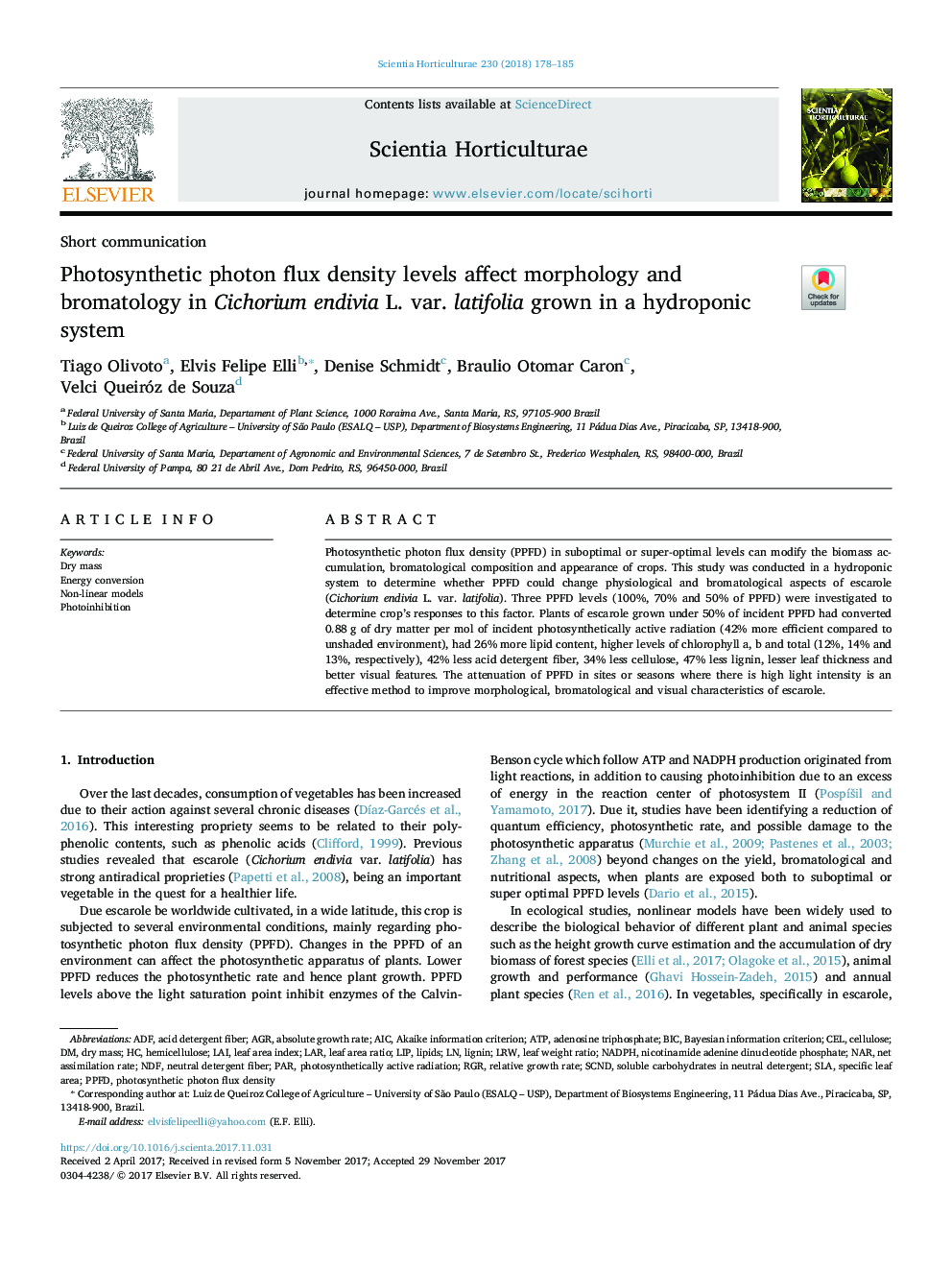| Article ID | Journal | Published Year | Pages | File Type |
|---|---|---|---|---|
| 8893080 | Scientia Horticulturae | 2018 | 8 Pages |
Abstract
Photosynthetic photon flux density (PPFD) in suboptimal or super-optimal levels can modify the biomass accumulation, bromatological composition and appearance of crops. This study was conducted in a hydroponic system to determine whether PPFD could change physiological and bromatological aspects of escarole (Cichorium endivia L. var. latifolia). Three PPFD levels (100%, 70% and 50% of PPFD) were investigated to determine crop's responses to this factor. Plants of escarole grown under 50% of incident PPFD had converted 0.88Â g of dry matter per mol of incident photosynthetically active radiation (42% more efficient compared to unshaded environment), had 26% more lipid content, higher levels of chlorophyll a, b and total (12%, 14% and 13%, respectively), 42% less acid detergent fiber, 34% less cellulose, 47% less lignin, lesser leaf thickness and better visual features. The attenuation of PPFD in sites or seasons where there is high light intensity is an effective method to improve morphological, bromatological and visual characteristics of escarole.
Keywords
CelLRWNDFRGRNARPPFDLIPSLANADPHAICBICADFAGRAdenosine TriphosphateATPacid detergent fiberPhotosynthetically active radiationEnergy conversionPardry massSpecific leaf areaCelluloseLeaf area indexLAIPhotoinhibitionphotosynthetic photon flux densityneutral detergent fiberLarLigninNon-linear modelsBayesian information criterionAkaike information criterionNet assimilation rateAbsolute growth rateRelative growth rateleaf area ratioleaf weight rationicotinamide adenine dinucleotide phosphatehemicelluloseLipids
Related Topics
Life Sciences
Agricultural and Biological Sciences
Horticulture
Authors
Tiago Olivoto, Elvis Felipe Elli, Denise Schmidt, Braulio Otomar Caron, Velci Queiróz de Souza,
